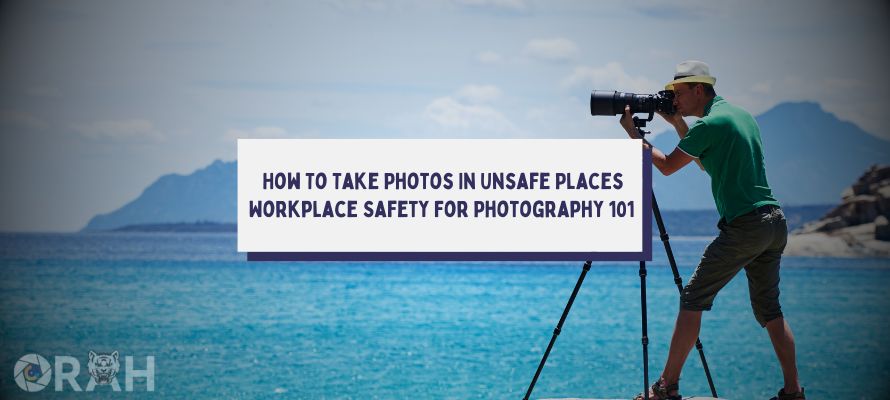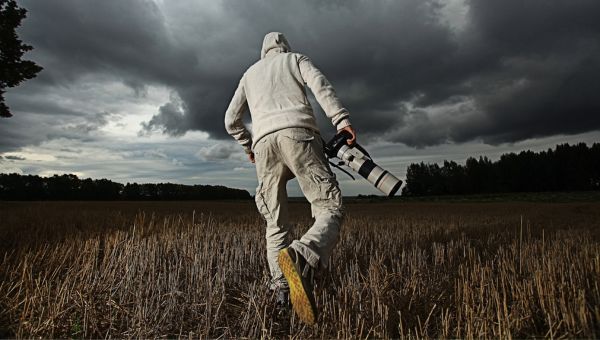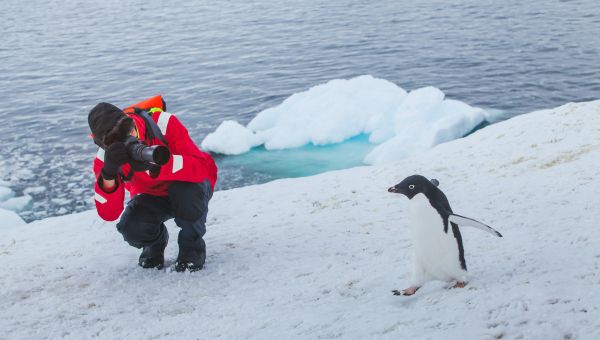
Photography can take you to exciting and sometimes challenging places. Whether you’re a professional photographer, an enthusiast, or just snapping shots for fun, you might find yourself in unsafe work environments at times.
Safety should always be a priority, and this article will guide you through the essential steps to ensure your well-being while capturing stunning images.
We’ll also touch on the importance of using appropriate protective gear like art-craft prescription safety glasses and how to make the most of camera shots and angles in such conditions.
Overview of Workplace Safety for Photography
Photographers often venture into hazardous environments like construction sites, industrial facilities, or even disaster scenes.

Ensuring your safety is crucial, and following these guidelines will help you minimize risks:
#1. Prioritize Personal Protective Equipment (PPE)
Wearing Art-Craft Prescription Safety Glasses
Safety glasses are a vital component of your PPE when working in unsafe environments. Art-craft prescription safety glasses provide both vision correction and protection for your eyes, ensuring you can see clearly while shielding your eyes from potential hazards like flying debris or chemicals.
#2. Assess the Environment
Identifying Hazards
Before you start shooting, take the time to identify potential dangers in your surroundings. This includes assessing the terrain, machinery, chemicals, and any other hazards that might pose a risk.
#3. Plan Your Shots and Angles
Selecting Camera Shots
Choose the appropriate camera shots to capture your subject while maintaining a safe distance from hazards.
This might involve using a zoom lens or telephoto lens to get close-up shots without physically approaching the danger.
Utilizing Camera Angles
Experiment with camera angles to achieve unique and compelling shots without compromising your safety. Low angles, bird’s-eye views, or close-ups can all tell a story without putting you in harm’s way.
#4. Communicate and Collaborate
Working with Others
In many cases, you won’t be alone in an unsafe environment. Communicate with coworkers, guides, or safety personnel to ensure everyone is aware of your presence and understands your objectives. Collaboration can enhance safety.
#5. Emergency Preparedness
Have an Escape Plan
Always have an escape plan in case of emergencies. Know the exits, emergency contact information, and how to access first aid supplies if needed.
Prioritize Personal Protective Equipment (PPE)
When taking photos in unsafe places, wearing appropriate Personal Protective Equipment (PPE) is paramount to your safety.
Art-Craft Prescription Safety Glasses are an excellent choice to protect your eyes while ensuring clear vision. They offer several advantages:
- Vision Correction: These safety glasses can be customized to your prescription, allowing you to see clearly, even in challenging environments.
- Impact Resistance: Art-Craft safety glasses are designed to withstand impact, protecting your eyes from debris, sparks, or other flying objects.
- Comfort: These glasses are crafted with comfort in mind, ensuring that you can wear them for extended periods without discomfort.
Your eyes are precious, and protecting them should always be a top priority when working in unsafe places.
Assess the Environment
Before you start snapping photos, it’s crucial to evaluate the environment thoroughly. Identifying potential hazards will help you plan your shots and navigate safely.
Identifying Hazards
- Terrain: Watch out for uneven surfaces, slippery floors, or unstable ground that could cause trips or falls.
- Machinery: Be aware of moving equipment, heavy machinery, or vehicles that could pose a crushing hazard.
- Chemicals: If you’re in an industrial setting, be cautious of chemical spills, leaks, or fumes.
- Structural Hazards: Look for unstable structures, loose debris, or potential collapse risks.
By recognizing these hazards, you can better plan your movements and shots to avoid dangerous situations.
Plan Your Shots and Angles

Once you’ve assessed the environment and identified potential risks, it’s time to plan your shots and angles carefully.
Selecting Camera Shots
- Wide Shots: Use wide-angle shots to capture the overall scene without getting too close to hazards.
- Zoom Lenses: Invest in quality zoom lenses to capture distant subjects without compromising safety.
- Telephoto Lenses: Telephoto lenses are excellent for getting close-up shots without physically approaching the danger.
Utilizing Camera Angles
- Low Angles: Capture dramatic low-angle shots to add depth and drama to your photos.
- Bird’s-Eye Views: Shoot from above to provide a unique perspective without compromising your safety.
- Close-Ups: Zoom in on specific details or subjects without physically getting too close.
Experimenting with different angles and lenses will help you capture compelling images while minimizing risk.
Communicate and Collaborate
When you’re in an unsafe environment, it’s essential to communicate effectively and collaborate with others who might be present.
Working with Others
- Safety Personnel: Consult with on-site safety personnel or guides who can provide insights into the environment and potential risks.
- Coworkers: If you’re part of a team, ensure that everyone is aware of your movements and objectives to avoid accidents.
- Clear Communication: Establish clear communication channels, such as hand signals or radios, to stay in touch with your team.
Collaboration enhances safety by ensuring that everyone is on the same page and can assist if needed.
Emergency Preparedness
No matter how well you plan, emergencies can still happen. Being prepared is crucial to your safety.
Have an Escape Plan
- Know the Exits: Familiarize yourself with the location of emergency exits and escape routes.
- Emergency Contacts: Keep a list of emergency contacts readily available.
- First Aid: Know where first aid supplies are located and how to use them.
Having an escape plan in place can make a significant difference in case of unexpected emergencies.
Final Remarks:
Photography in unsafe places can lead to stunning and impactful images, but safety should always be the top priority.
By prioritizing personal protective equipment like art-craft prescription safety glasses, assessing the environment, planning your shots and angles, communicating effectively, and being prepared for emergencies, you can navigate hazardous situations while capturing remarkable photos safely.
Always remember that your well-being is paramount, and taking precautions ensures that you can continue pursuing your passion for photography without unnecessary risks.